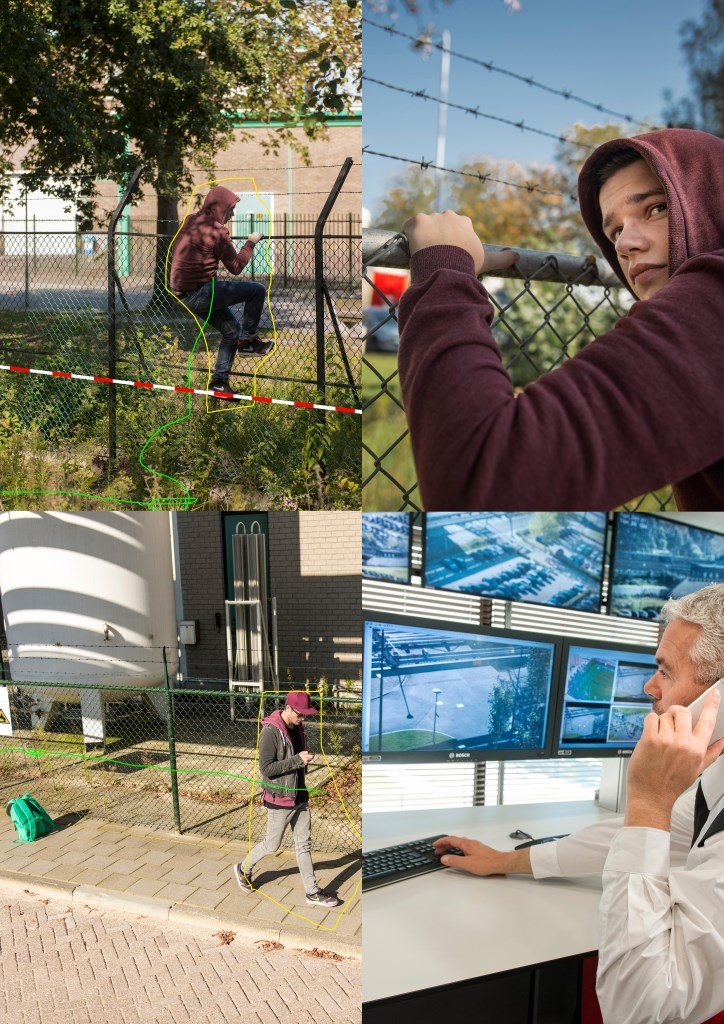Ensuring manageability and accessibility of video data
Digital transformation is rapidly changing the video surveillance industry. A growing amount of digital security cameras are safeguarding public and private spaces. For example, Lo...



Digital transformation is rapidly changing the video surveillance industry. A growing amount of digital security cameras are safeguarding public and private spaces. For example, London alone is home to more than 500,000 cameras, mostly digital. Massive amounts of surveillance data generated on a daily basis are moving the video surveillance industry closer to the realm of Information Technology (IT), with two major trends emerging:
- Skyrocketing petabytes of captured video data are boosting the global video surveillance storage market: According to the current Global Forecast from MarketsandMarkets, the storage market is set to reach $18.28 billion by 2020 at a compound annual growth rate (CAGR) of 22.41%.
- Today’s video surveillance data is increasingly connected across local and global networks. This opens the door to cybercrime and extends the focus of security from the physical level into the digital domain.
Considering these major trends, we need to focus on the manageability and security of video data.
Bosch drives a four-step approach covering the entire security network – cameras, servers, clients, storage devices, network protocols and standard key infrastructures – to keep video data secure. What is needed to keep video data manageable in a hyper-connected world?
In today’s video surveillance applications there is an ever increasing demand for more detail. However, the industry does rely too heavily on higher resolution and consequently more detail. More details and thus pixels means more data, which in turn means more storage capacity and a higher network load. Although highly detailed images make it easy to distinguish individuals or minor details, we need to find ways to reduce storage requirements and network strain. But that is not all. The number of cameras being deployed in the market place is also rapidly increasing. Even if storage requirements and network strain are reduced significantly we still face an enormous amount of data. This leaves us with the manageability and accessibility of video data.
Manageability and accessibility of video data
Can new encoding and compression technologies such as H.265 compensate for the enormous amount of data? They can only partially offset the constant increase of data volumes. It also needs to be considered that the majority of stored video data is never used. We need to ensure that the correct data is delivered when needed, under all circumstances, anywhere, and at the lowest costs and network strain. Considering this, it would be helpful if network video cameras understand what they see. In other words when they add “sense and structure” to video data in order to keep video data manageable and easy accessible.
Reduce storage requirements and network strain
Intelligent techniques like Intelligent Dynamic Noise Reduction help reduce storage requirements and network strain. With this built-in technology the Bosch network camera intelligently distinguishes between noise and relevant information, such as movement. It reduces bitrate by up to 50%. And because noise is reduced at the source during image capture, the lower bitrate does not compromise video quality. What else?
Enable 24/7 remote access to high resolution video data regardless of available bandwidth
While substantial reduction of bitrate can be achieved with Intelligent Dynamic Noise Reduction, limited bandwidth can still make it impossible to stream high definition or even 4K ultra HD video on mobile devices. Dynamic Transcoding technology from Bosch automatically tailors the high resolution video stream to the available bandwidth without compromising video quality. All information, like original resolution and frame rate, is retained, regardless of the available bandwidth. This offers smooth video streaming from anywhere and enables security guards, operators or users to easily identify suspicious or interesting events. When an event is identified, press pause to instantly display the high resolution (up to 4K ultra HD) image with the fine level of detail needed. With Intelligent Dynamic Noise Reduction and Dynamic Transcoding we have ensured that video is delivered anywhere, and at lowered costs and network strain. How do we ensure the correct data is delivered?
Add sense and structure
Bosch video analytics at the edge instantly detect suspicious events and alert when needed once predefined alarms are triggered. They add sense and structure to video by adding metadata. This content analysis information, in the form of metadata, is stored alongside the video images. It contains details on all objects entering or leaving the monitored scene like speed, direction, color, and much more. The metadata enables users to quickly retrieve the relevant image from hours of stored video. It can also be used to deliver irrefutable forensic evidence or information to optimize business processes based on, for example, people counting or crowd density information. Metadata contains Also with its built-in video analytics the camera can decide to stream only relevant information. This helps to reduce network strain, storage requirements and keeps video data manageable. Another advantage is that the camera can use the metadata respectively video analytics to dynamically optimize its image processing to ensure perfect exposure of the object of interest at all times. Considering this, it makes most sense to offer high quality video analytics at the edge. Since bearing in mind the complete video security infrastructure including cameras (edge), servers, storage devices and clients video analytics have highest impact at the time of data capture. With built-in (edge) video analytics network cameras are capable of interpreting what they see and subsequently decide what action is needed. In a hyper-connected world we should consider to mainly use intelligent devices (e.g. network cameras with built-in video analytics) to meet the needs of distributed intelligence and keep data manageable.
What else needs to be considered?
Depending on the type of application Bosch offers either Essential Analytics or Intelligent Video Analytics. Essential Analytics are ideal for Small and medium businesses, large retail stores, commercial buildings and warehouses for advanced intrusion detection, enforcing health & safety regulations, and business analytics like crowd density information and people counting. Intelligent Video Analytics is specifically tailored for mission critical applications like the perimeter protection of airports, critical infrastructures and government buildings as well as border patrol and traffic monitoring.
In mission critical applications we want to ensure that the number of false alarms caused by the elements of mother nature are minimized. Besides selecting the correct hardware, like the MIC IP starlight 7000 HD, built-in video analytics need to be tailored for extreme conditions. Network cameras with Intelligent Video Analytics (e.g. DINION IP starlight 8000 MP) from Bosch are specifically tailored to provide extremely reliable video analytics under most adverse circumstances. These cameras can easily detect the difference between rain or snow and an object of interest and thus greatly reduce the number of false alarms possibly caused by the elements of mother nature. With more than 15 years of continuous in-house development Bosch delivers robust Intelligent Video Analytics, which is able to differentiate between the movement of an object of interest and the moving of water, flying leaves, moving branches and the like. Network cameras featuring Intelligent Video Analytics also offer a water vehicle-tracking mode, improving security in critical infrastructures along rivers or coasts.
most read

Is Your Venue Ready for Martyn’s Law?
Martyn’s Law demands stronger security by 2027. Is your venue prepared to protect and respond?

When the Internet stumbles: Why DNS is important
When DNS fails, the internet stumbles-AWS outage proves resilience and redundancy are vital for digital trust

GIT SECURITY AWARD 2026 - The winners have been announced!
GIT SECURITY AWARD 2026: The best safety and security solutions of the year - now an overview of all winners

Assa Abloy's battery-powered Aperio KL100 secures lockers
Boost workplace security and operational flexibility by securing more than just doors.

VIP-Lounge Interview: Marco Mille, Global Head of Security, Siemens AG
VIP in the World of Security: Marco Mille, Global Head of Security at Siemens AG








